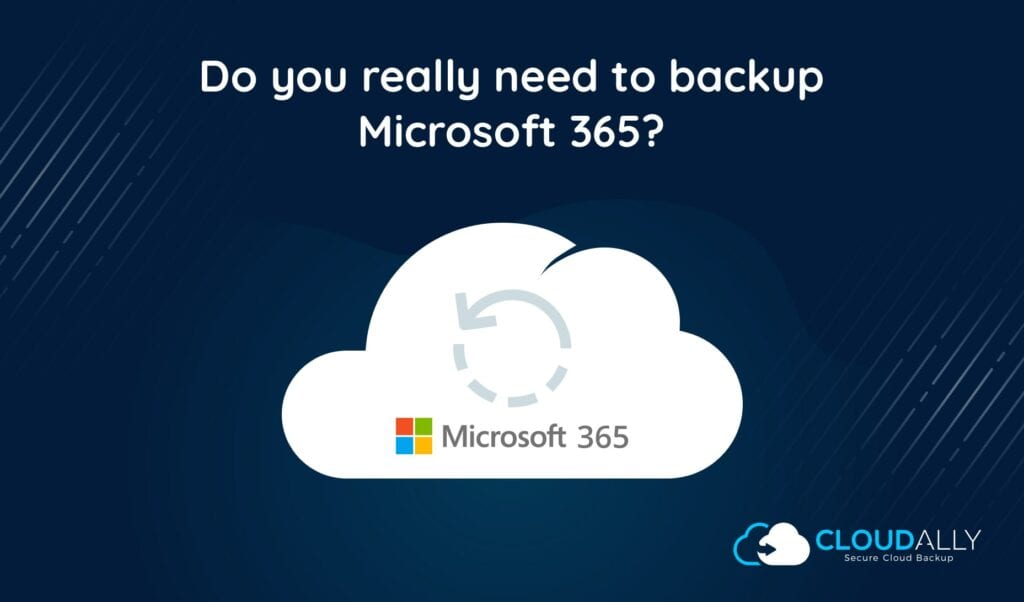How to Ensure Business Continuity When Microsoft Backup Fails!
The importance of being earnest with the need for 3rd party backup!
One of Microsoft Windows 10’s most effective built-in backup features used to be its Registry backups. Though the Microsoft backup commands 
After numerous complaints, Microsoft explained what was happening, but such a long gap between Registry backups certainly caused problems for companies. This kind of issue demonstrates the importance of creating third-party backups, even if your operating system promises to provide recovery options. Backup for online business solutions is also required because of the lack of restore possibilities beyond the built-in data retention periods, in solutions such as Office 365, G Suite, etc.
What this article is about:
- Microsoft’s Registry Backups
- History of Problems with Windows 10
- Registry Backup Work-Around in Windows 10
- Using CloudAlly’s Backup for Business
In June of 2019, Ghacks picked up on the fact that Microsoft was no longer creating Registry backups. While it seemed like these backups were being created as usual, only registry hives, not files, were actually appearing in the RegBack folder.
This meant, of course, that users weren’t able to restore their Registries back to an earlier state by using one of these backups.
Microsoft didn’t address this issue for nearly a year, and when they did, Forbes’ Consumer Tech writer Gordon Kelly calls their delayed response “worrying on multiple levels.”
It turns out that Windows 10 hadn’t been creating Registry backups for nearly a year. However, the tech giant didn’t dub this failure to make backups a bug or a glitch but instead called it a change “by design.”
An explanation (belatedly) issued by Microsoft reads:
“Starting in Windows 10, version 1803, Windows no longer automatically backs up the system registry to the RegBack folder…
This change is by design, and is intended to help reduce the overall disk footprint size of Windows. To recover a system with a corrupt registry hive, Microsoft recommends that you use a system restore point.”
What’s particularly shocking about this change is that users were led to believe that their Registry backups were still running as usual. After all, in the Registry backup folder, backups were still being added, though the actual file size of these phantom files was only 0 KB.
Kelly explains why Microsoft’s surprisingly-late explanation of this change is so problematic:
“Backing up a registry is a crucial last line of defense for many businesses and everyday users. Should a Windows System Restore point fail, barring the use of third-party software, the registry backup is all you have.”
History of Problems with Windows 10
When Windows 10 1803 was released in April 2018, users started complaining about the Registry backup issue in Microsoft’s Feedback Hub. However, nobody responded to their complaints or offered a solution to their problem.
Kelly dubs what Microsoft was doing here a “deception,” though it’s difficult to understand why the company might have wanted to make such a change without letting its user know about it. A backup registry usually takes up 50 to 100 MB on a disk, and if administrators wanted to free up this space, it seems they could have made the choice to turn off registry backups on their own.
While it’s unclear why Microsoft might have made this change – and then left users in the dark about it for more than a year – in April 2019, the company did promise to offer its users more transparency and honesty. However, as the company didn’t issue an explanation about what had been going on with Registry backup until two months after that, it remains to be seen if the company will live up to its promise.
With problems like these, it’s perhaps no surprise that so many users are resisting the move to Windows 10, instead hanging on to Windows 7 as long as they can.
Registry Backup Work-Around in Windows 10
Though Microsoft automatically disabled Registry backups, the company also gave administrators a workaround that allows them to re-enable this backup using by changing the Registry key’s value. Here’s how to do it:
- First, type regedit.exe into the start menu and open the Registry Editor.
- Next, open the Configuration Manager using the key. HKLMSystemCurrentControlSetControlSession ManagerConfiguration Manager
- From there, right click on the Configuration Manager and choose New > Dword (32-bit) Value. Call it EnablePeriodicBackup.
- After your backup has been created, double-click it to set its value to 1.
- Restart the computer.
- When Windows reboots, it will start backing up the Registry to the RegBack folder again and will use RegIdleBackup task to start performing regular backups again.
CAPTION: From Microsoft
Obviously, though, since Microsoft turned off this functionality, it doesn’t recommend this method for restoring corrupt registry hives. Instead, it suggests using a system restore point for this type of restoration.
Further, setting a Registry backup at this point is too little, too late for many users. Any user that wanted to restore the Registry to before Microsoft’s announcement in June 2019 – backups they believed they had – are out of luck, unless they were backing up their files with a third-party platform in the first place.
Using CloudAlly’s Backup for Business – on cloud solutions.
Business who wish to maintain business continuity, and be able to restore from any point in time with an unlimited retention period, for solutions such as Microsoft Office 365 online, need to backup with 3rd party providers.
In turn, CloudAlly offers the security to know that your data will be recoverable. CloudAlly backs up your data daily and allows for unlimited archiving. What’s more, you can use granular restore for single lost files or you can restore a mailbox or calendar, without losing updated information.









